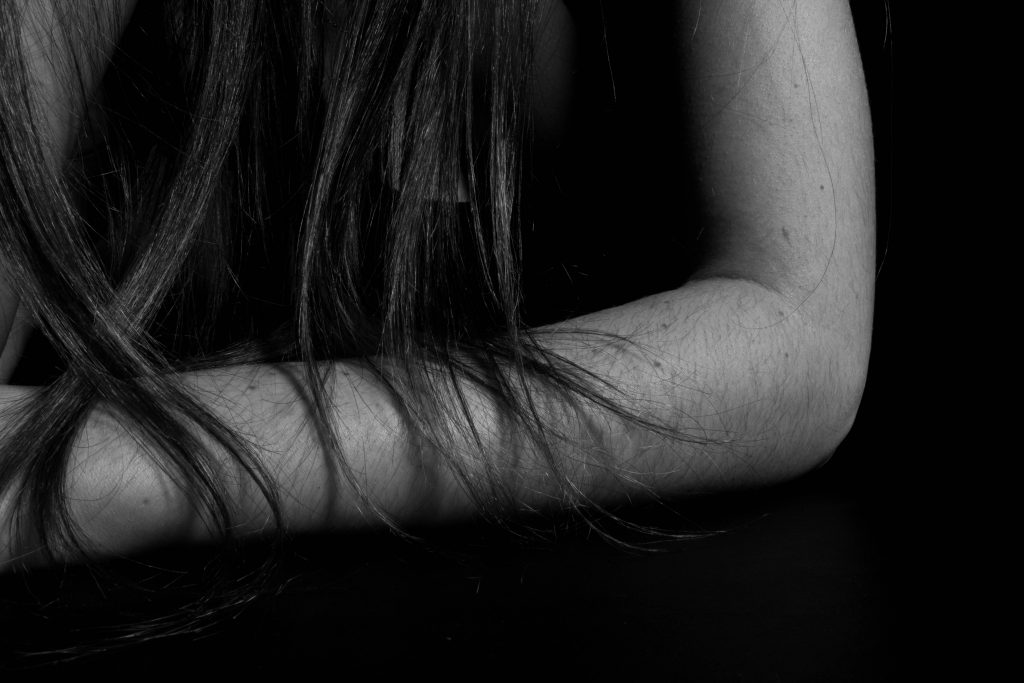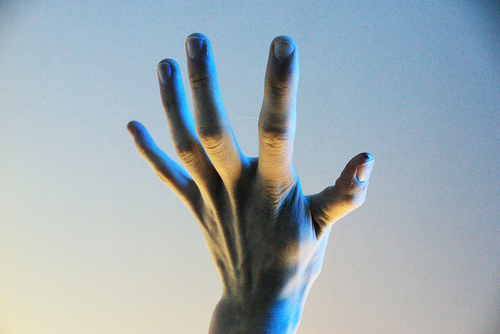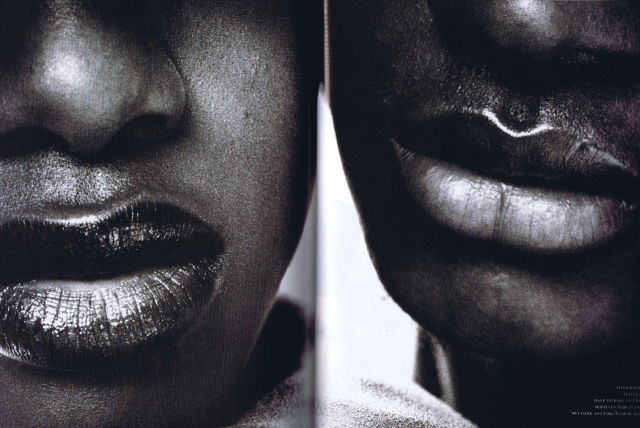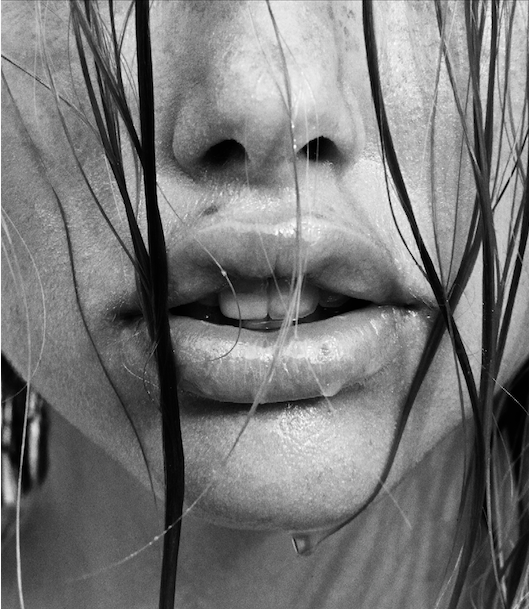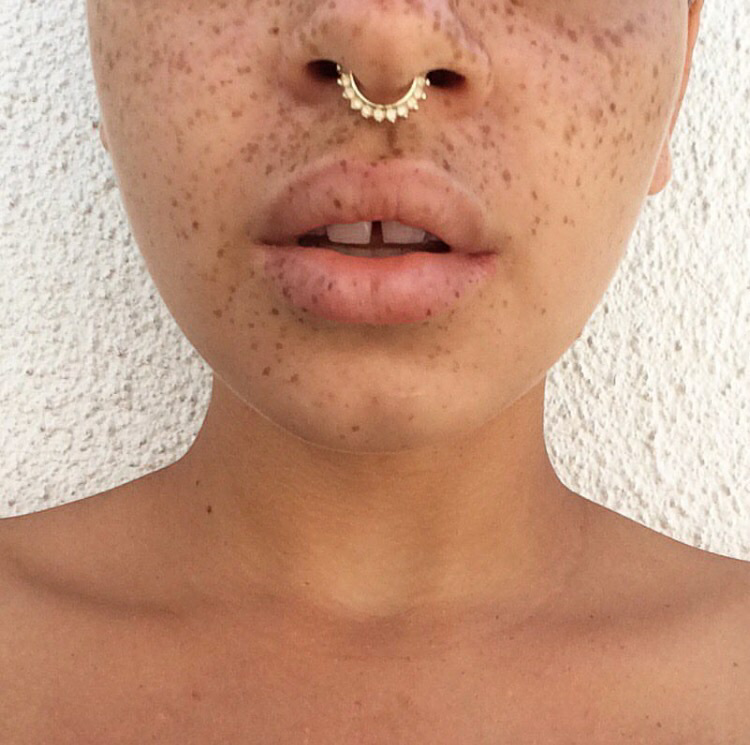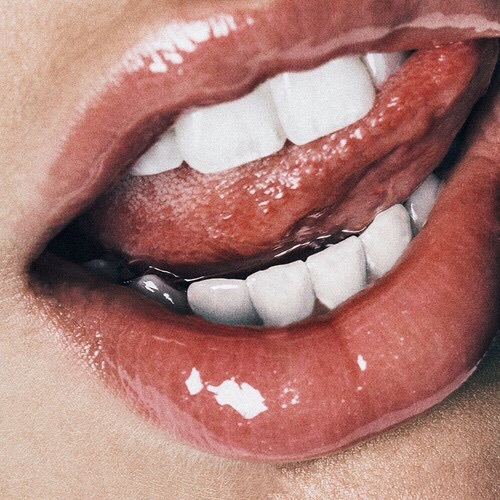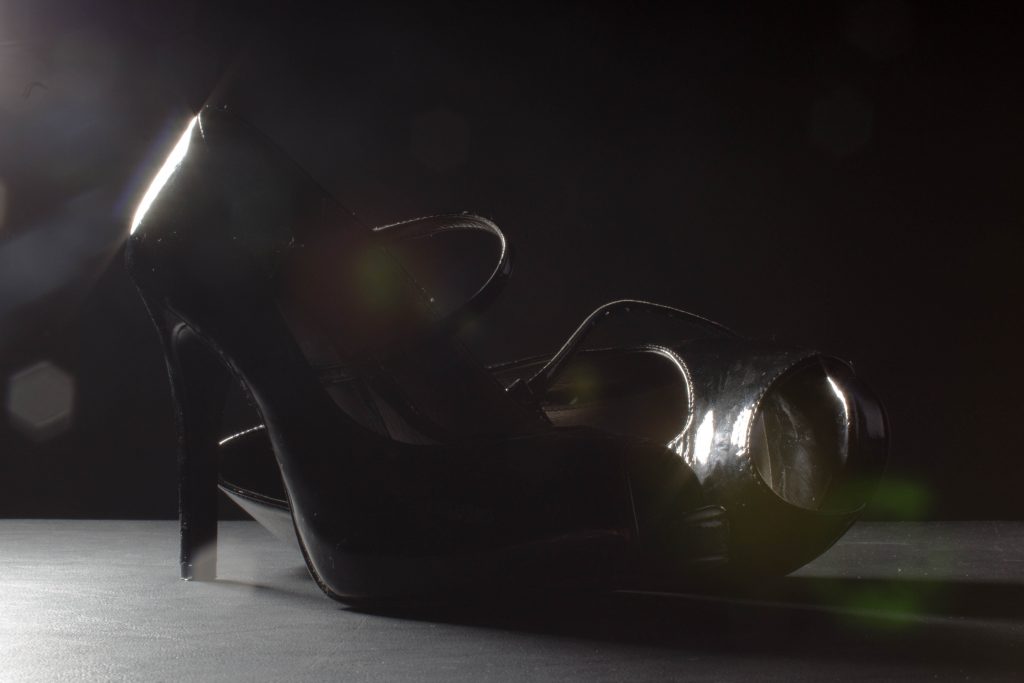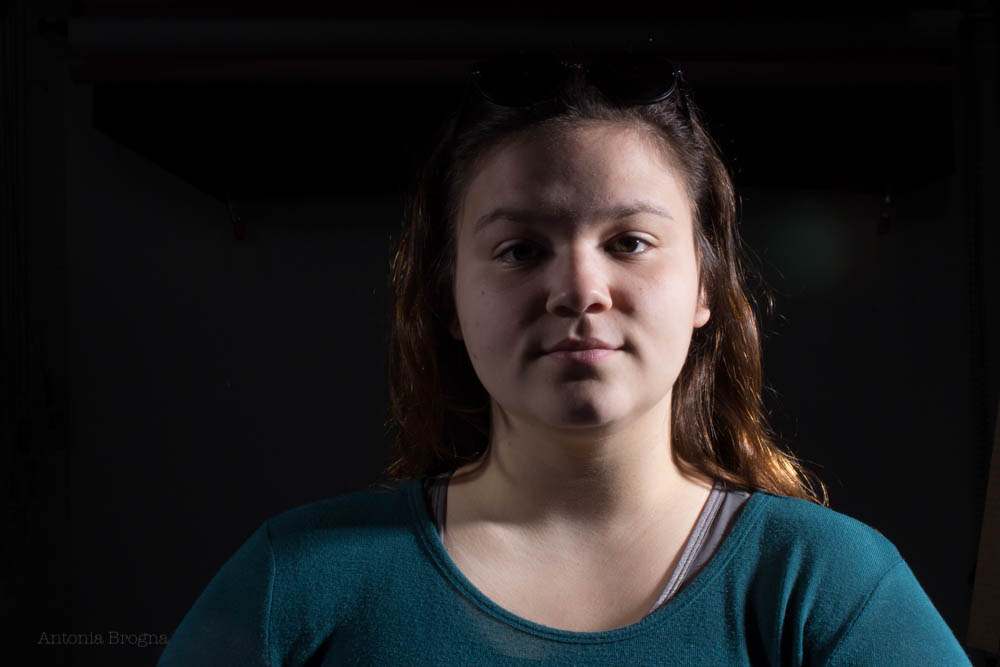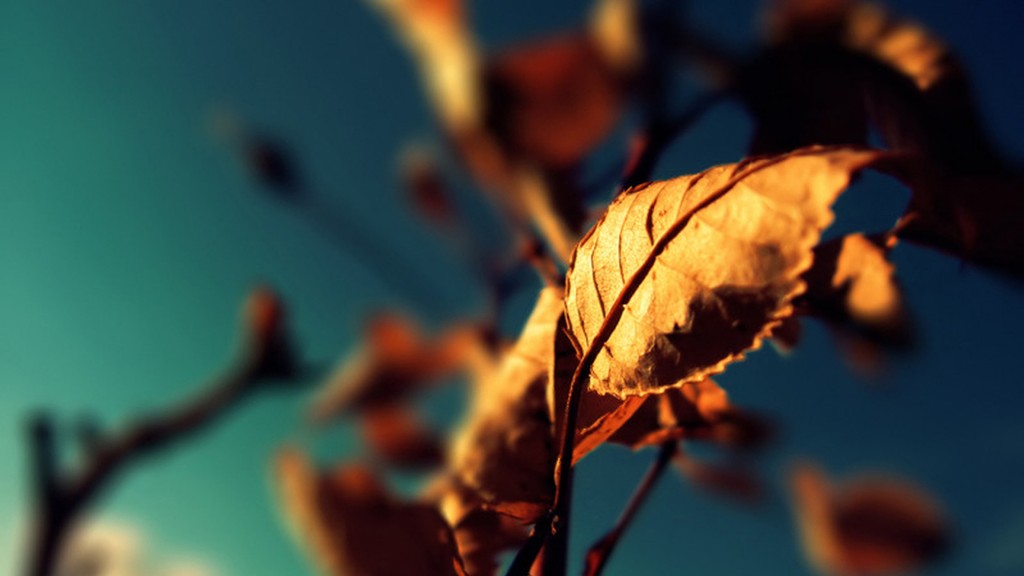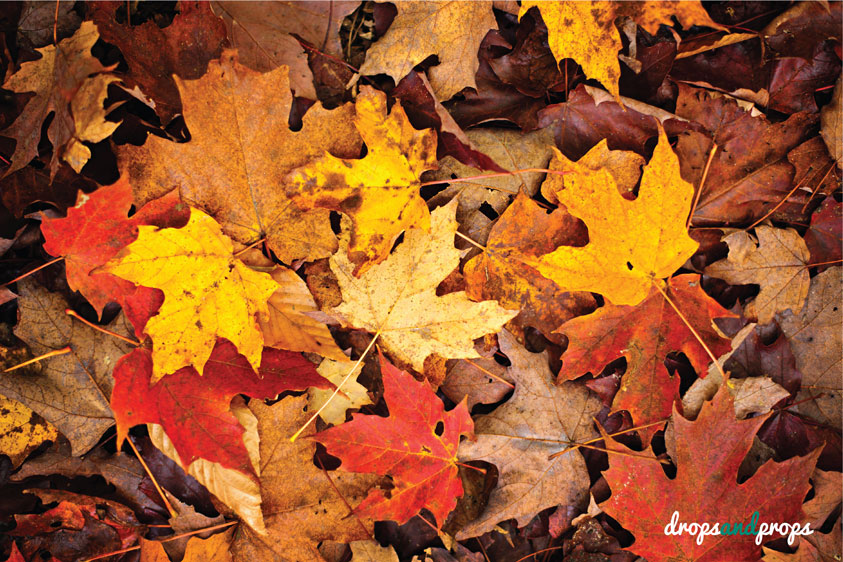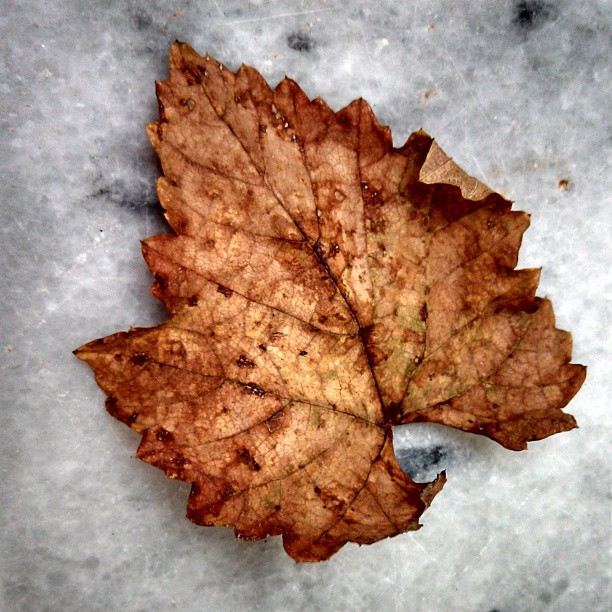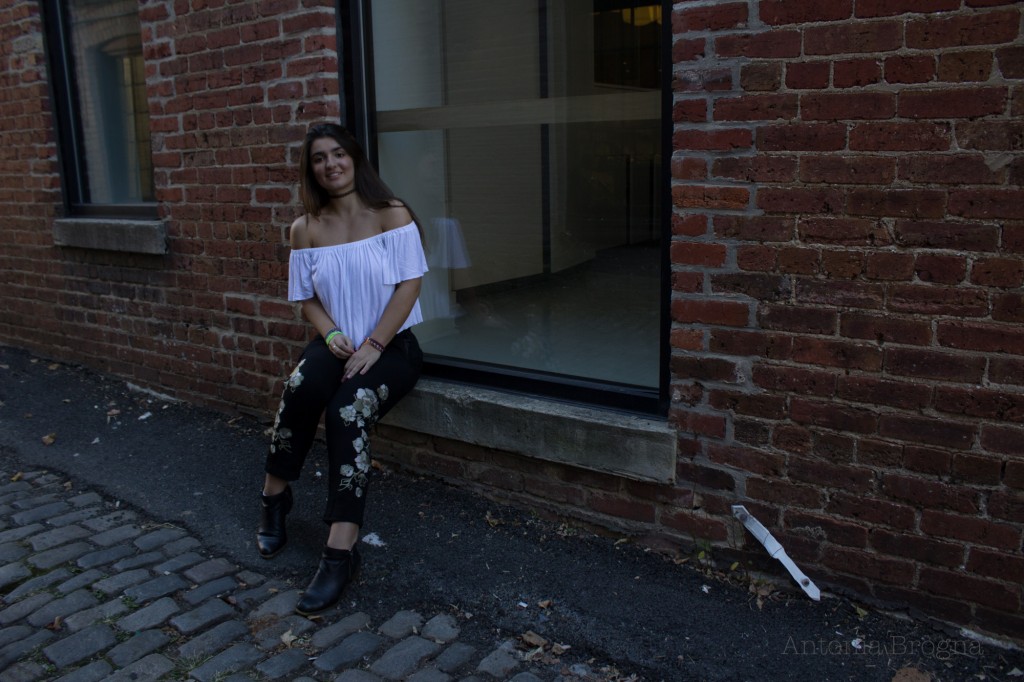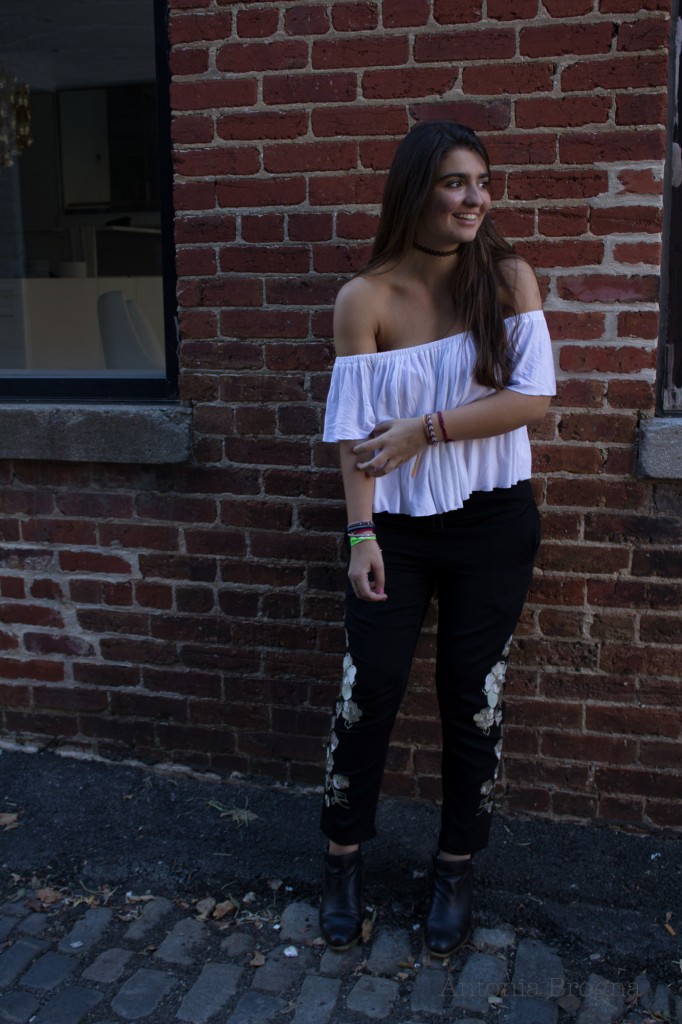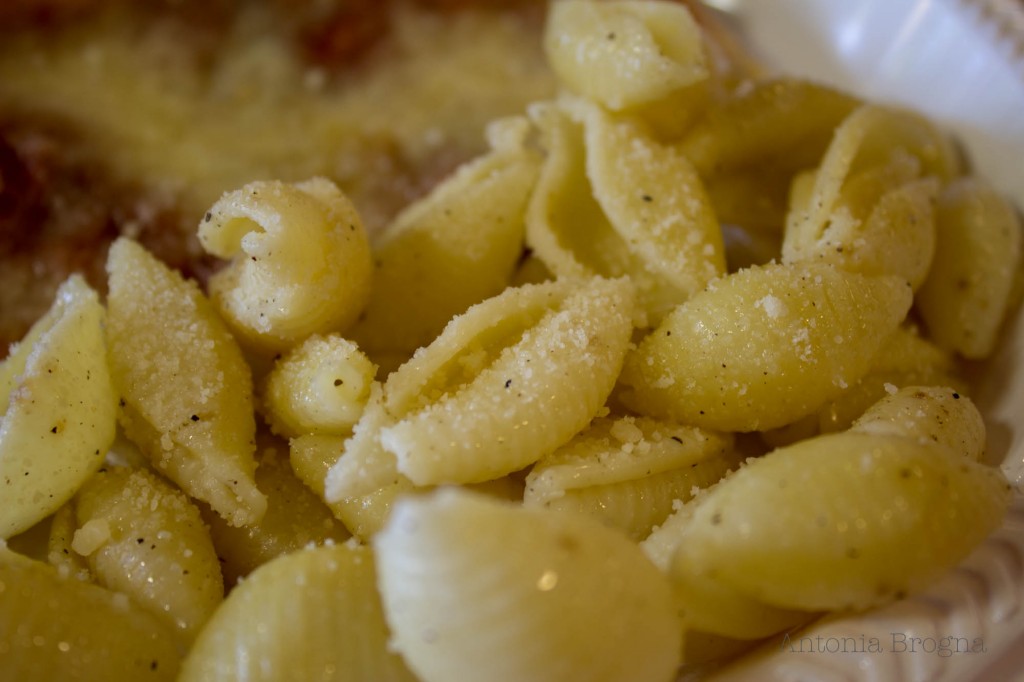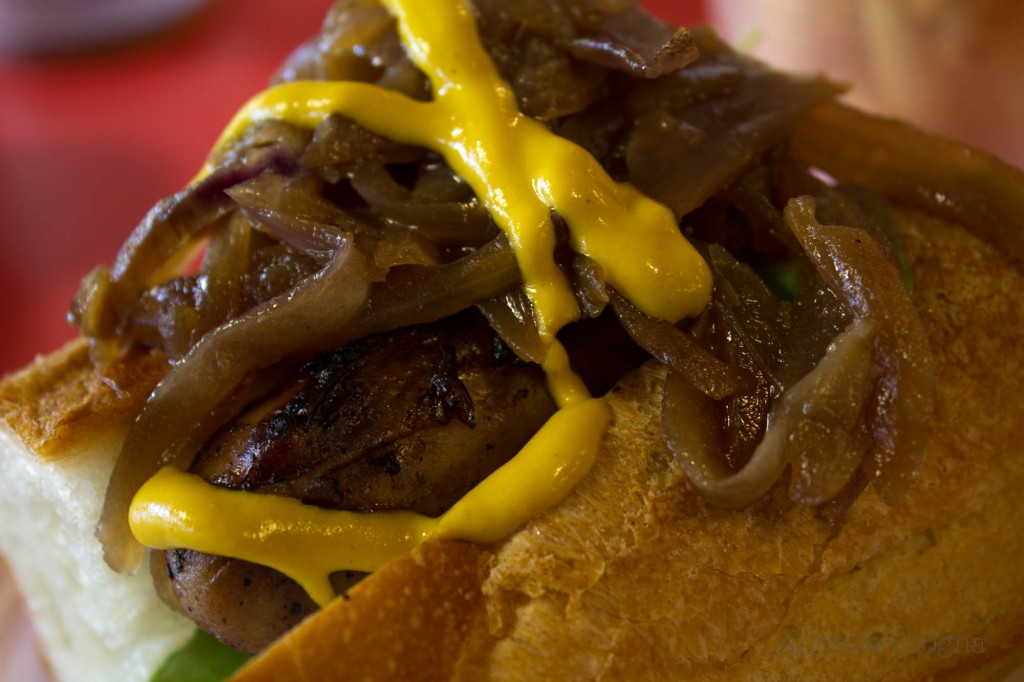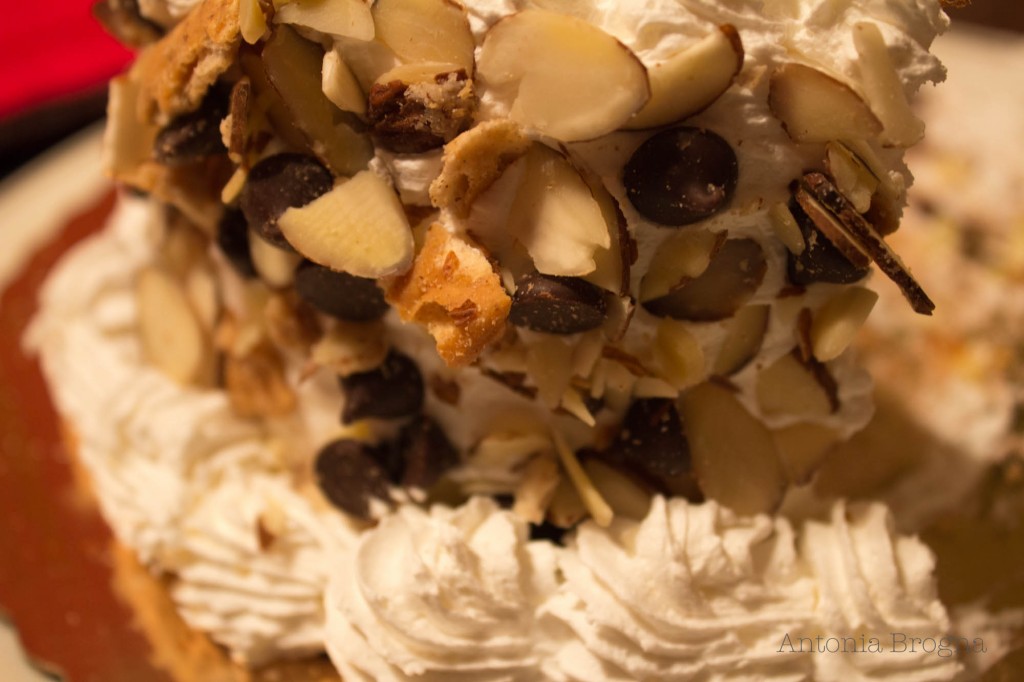Some more photographic experiments, this time with friends~
We were supposed to give light painting a try. There are so many different ways to go about doing this, so here are some methods I attempted:
One
For these takes, I used the moon as my light source because it was so bright. Since the moon was stationary, I moved the camera around to make designs. The moon was so bright that I had to use a very low ISO. Luckily, it didn’t pick up any extraneous lights.
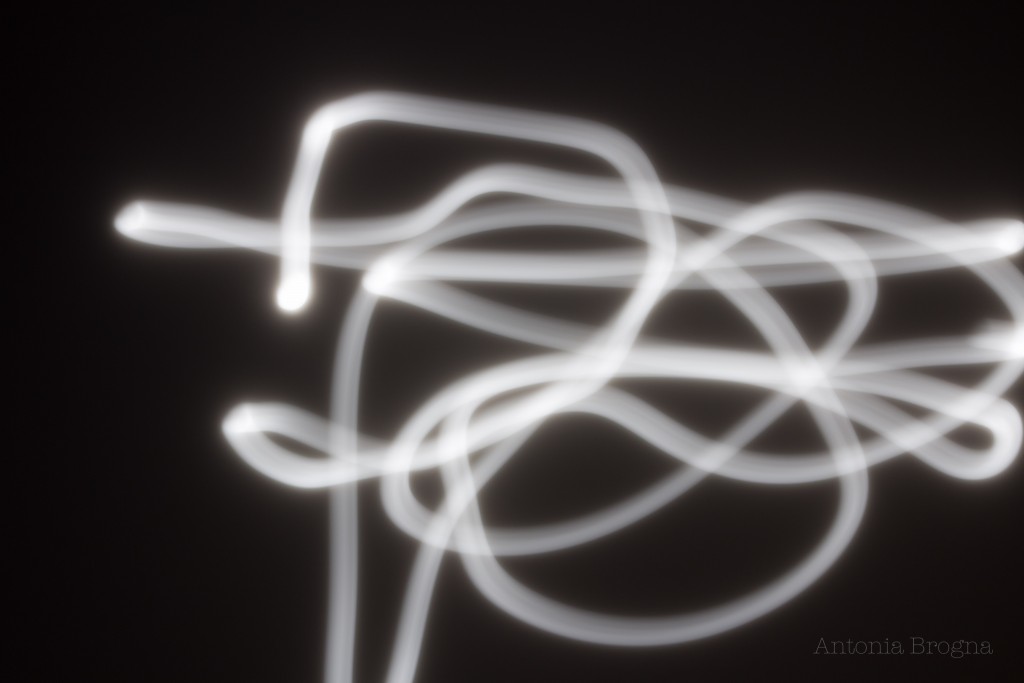
F-stop: f/4.5; Shutter speed: 6 sec.; ISO: 100; Focal length: 75mm

F-stop: f/4.5; Shutter speed: 6 sec.; ISO: 100; Focal length: 75mm
Two
In these shots, I introduced a person. I had my friend Alyssa stand still but move just her arm, which held her phone. The background, however, was too illuminated. For the second photo, even though I had my camera on a tripod, I accidentally introduced some camera shake when I pressed the shutter button, so I decided to move around the camera while my friend moved around her phone. I think it created a cool, blurred background effect that I wasn’t really planning on getting. However, the background was still too bright for my liking, so I tried to change the ISO again. The tricky part was that it couldn’t be too low because then the light wasn’t prominent or bright enough, but if it was too high, you could see the background.
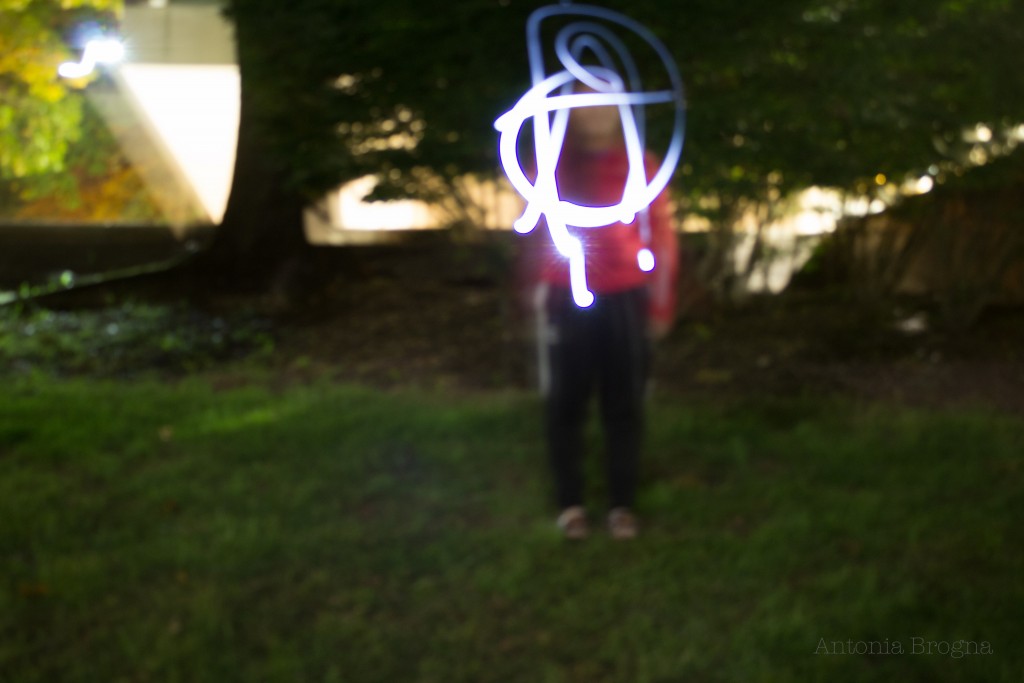
F-stop: f/4.5; Shutter speed: 20 sec.; ISO: 400; Focal length: 33mm

F-stop: f/4.5; Shutter speed: 20 sec.; ISO: 400; Focal length: 33mm
Three
For the next series of photos, my friends wanted to write out words. They have pretty messed up senses of humor, though. Alyssa has diabetes, so that was the word she chose to write. The biggest struggle with her was getting her to stay in the frame and spell or write diabetes correctly (in her defense it was close to 1 AM.) My friend Mike suggested that we try a wide angle lens, so I added a wide angle attachment to my usual lens. I was then able to get Alyssa to stay in the scene, though it took her several tries to get her desired effect (though she couldn’t write it backward, so her word looks mirrored in the photograph.) My friend Marissa then wrote “Yikes” because that’s her catchphrase. Hers went a lot smoother. Then, Mike wrote “Deaf” because he is deaf in his left ear. With his, we learned that if you shined his phone flashlight in one spot for too long, it would create a type of sparkling effect. They all used their phone lights for this.

F-stop: f/25; Shutter speed: 20 sec.; ISO: 200; Focal length: 24mm
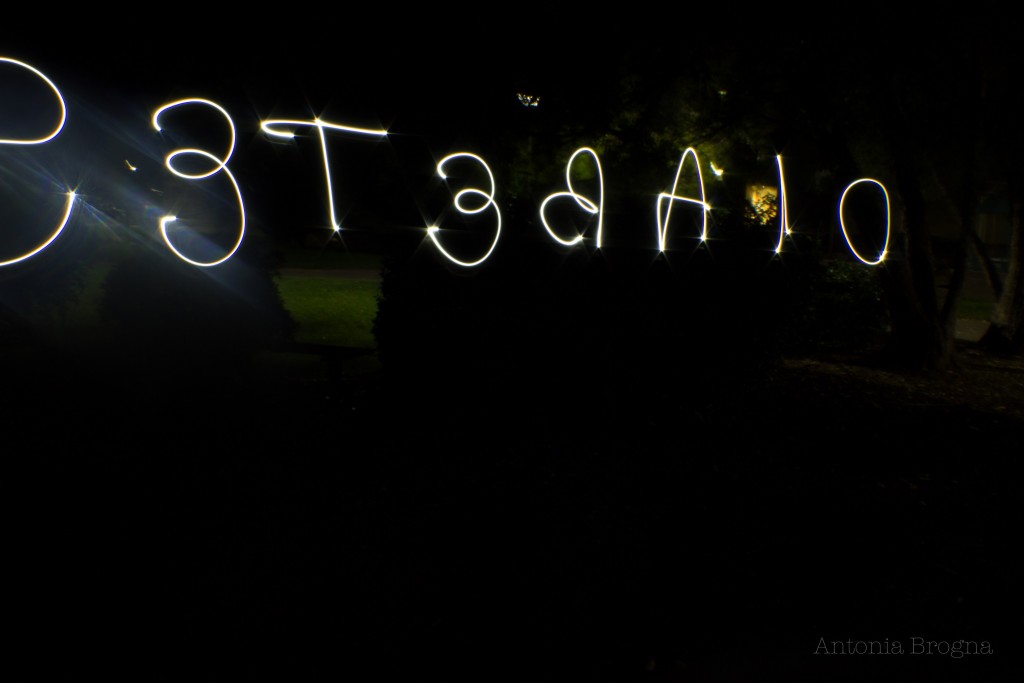
F-stop: f/25; Shutter speed: 30 sec.; ISO: 100; Focal length: 24mm

F-stop: f/25: Shutter speed: 30 sec.; ISO: 100; Focal length: 24mm
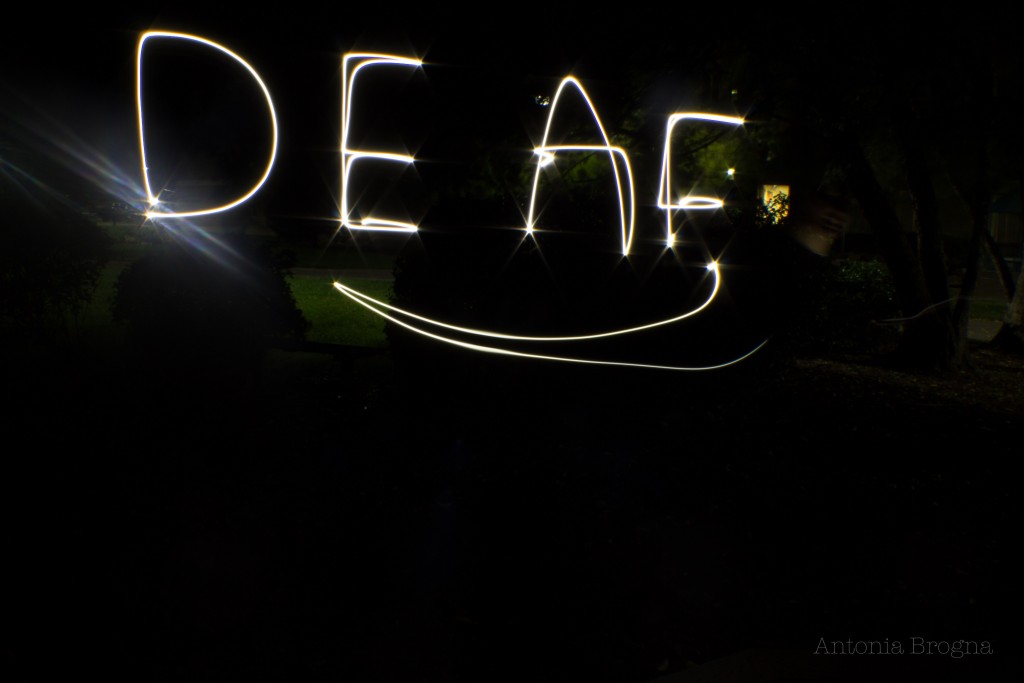
F-stop: f/25; Shutter speed: 30 sec.; ISO: 100; Focal length: 24mm
Four
In this one shot, Mike used a small, green Hulk/Bruce Banner keychain flashlight to draw music notes. It’s not very clear because of the size and quality of the light, but it was the first time we played with color.

F-stop: f/25; Shutter speed: 30 sec.; ISO: 100; Focal length: 24mm
Five
In the next series of photos, we played around a lot with lighting the subject and drawing behind or around them. We experimented with how far away you had to be to really light the person. We learned that with our camera flashes, it wasn’t enough to stand next to the camera and shine the light on the person, which is what we tried in the second picture. Instead, one person had to run up to the person and light them up before running out of the scene so another person could run in and draw something. I don’t think we ever really came up with the best lighting solution, though, because most of the subjects are unevenly lit.

F-stop: f/25; Shutter speed: 25 sec.; ISO: 100; Focal length: 24mm
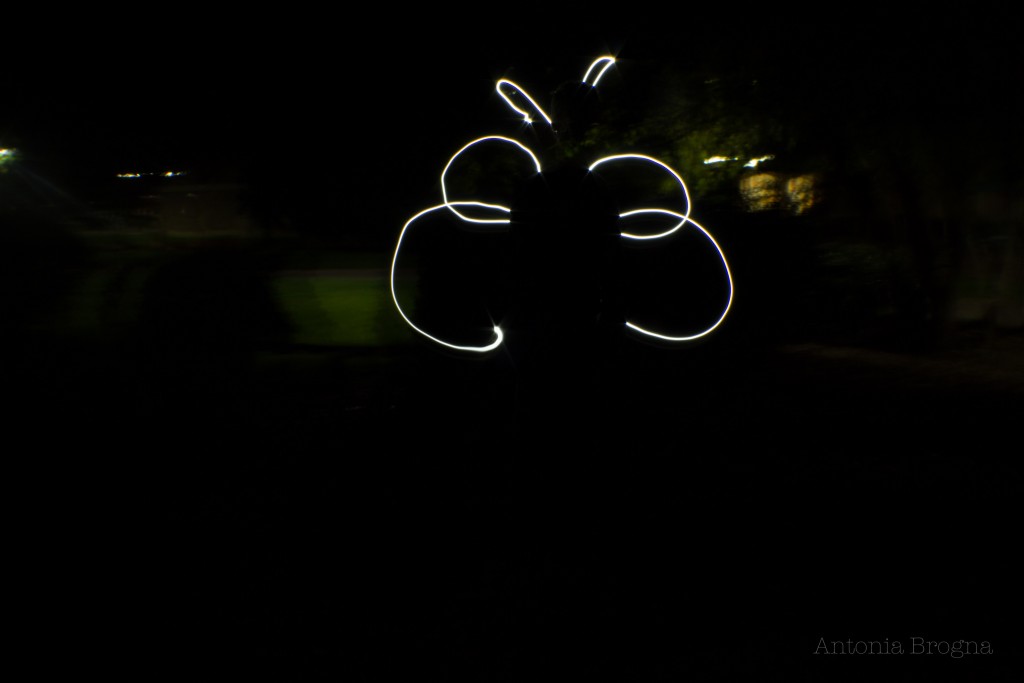
F-stop: f/25; Shutter speed: 30 sec.; ISO: 100; Focal length: 24mm

F-stop: f/25; Shutter speed: 30 sec.; ISO: 200; Focal length: 24mm
Five
This shot happened accidentally because Alyssa exposed her phone screen to the camera, but it created a cool, faded, colored look.

F-stop: f/25; Shutter speed: 30 sec.; ISO: 200; Focal length: 24mm
Six
We decided to keep experimenting with color, so I told Marissa to hold one of my camera filters over the flash of her phone while drawing a thought bubble coming out of Alyssa’s head. Alyssa is also super awkwardly lit in this, thanks to Mike.

F-stop: f/25; Shutter speed: 27 sec.; ISO: 200; Focal length: 24mm
Seven
For this shot, we decided to draw a crown over Alyssa’s head. The initial problem was that no one could seem to draw a proportional crown in the right spot. Once that was mostly resolved, the second problem became that Alyssa could not stand still or keep a straight face long enough, so if you look closely, you’ll see her face looks kinda demented.

F-stop: f/25; Shutter speed: 34 sec.; ISO: 200; Focal length: 24mm
Eight
Our last method was the silhouette. Mike used his phone flashlight, which was the brightest of all of ours, to trace Alyssa’s stance. According to Alyssa, it looks like she has fireworks shooting out of her armpit because Mike held his light in one spot for slightly longer than the rest.
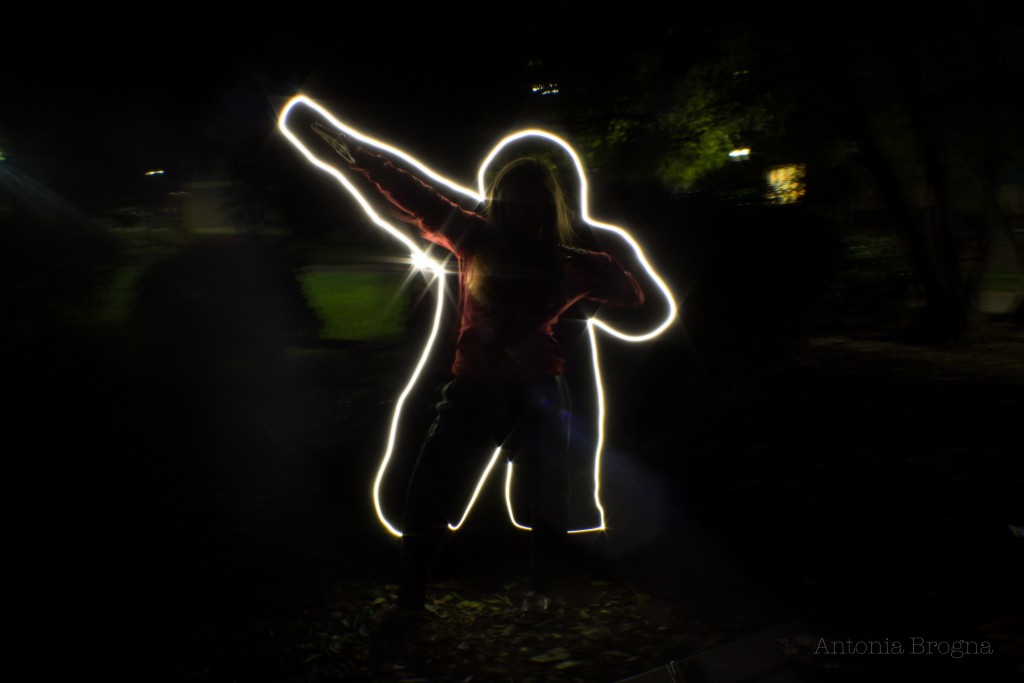
F-stop: f/25; Shutter speed: 19 sec.; ISO: 200; Focal length: 24mm




